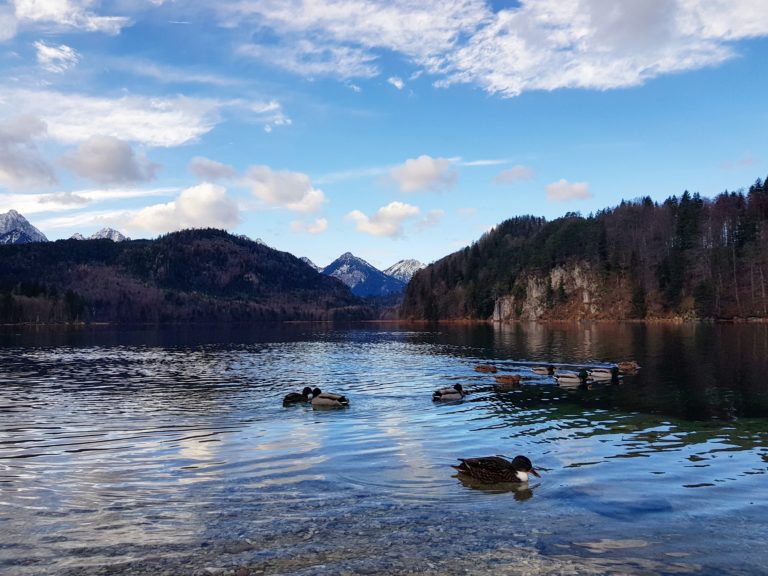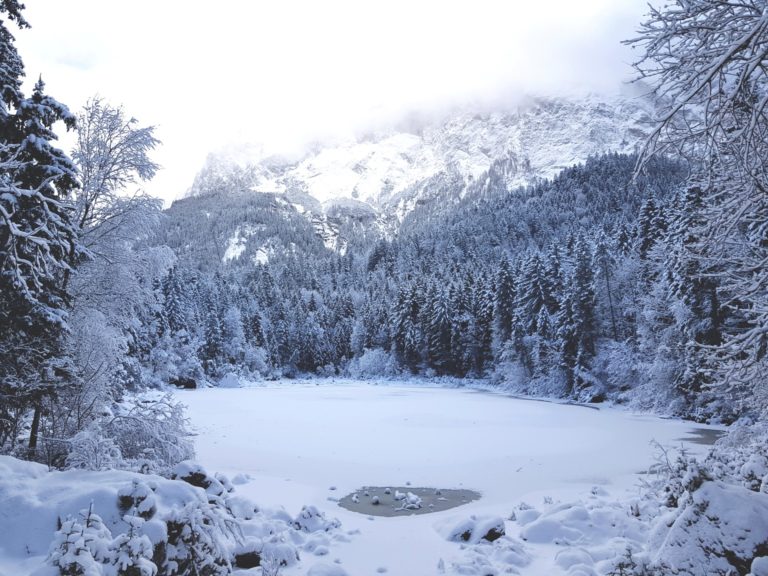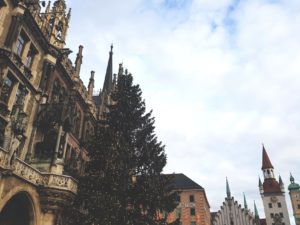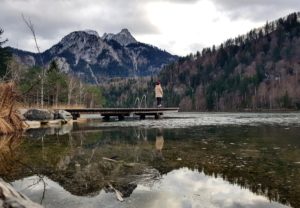Nestled within the pine trees on a rugged cliff, surrounded by snow-dusted mountains and glistening lakes, lies something truly magical.
So magical, that it’s said to have inspired Sleeping Beauty’s castle…
And what better place for this princess to celebrate her birthday than at a real life Disney castle?
After a merry time in Munich, we left the bustling city and headed south, driving along winding roads and up into the cooler mountain air. Travelling long into the night, we arrived at our next destination of Hopfensee Am See in the pitch black and headed straight to bed to rest up before the next day’s adventures.

What a view to wake up to! Looking out across the lake over a breakfast of pancakes and pretzels, we finally had our first glimpse of the snow I’d been longing for. The perfect way to start the day!
But it was back in the car before long with a short drive over to the next village along to visit the fairytale castles of Neuschwanstein and Hohenschwangau.
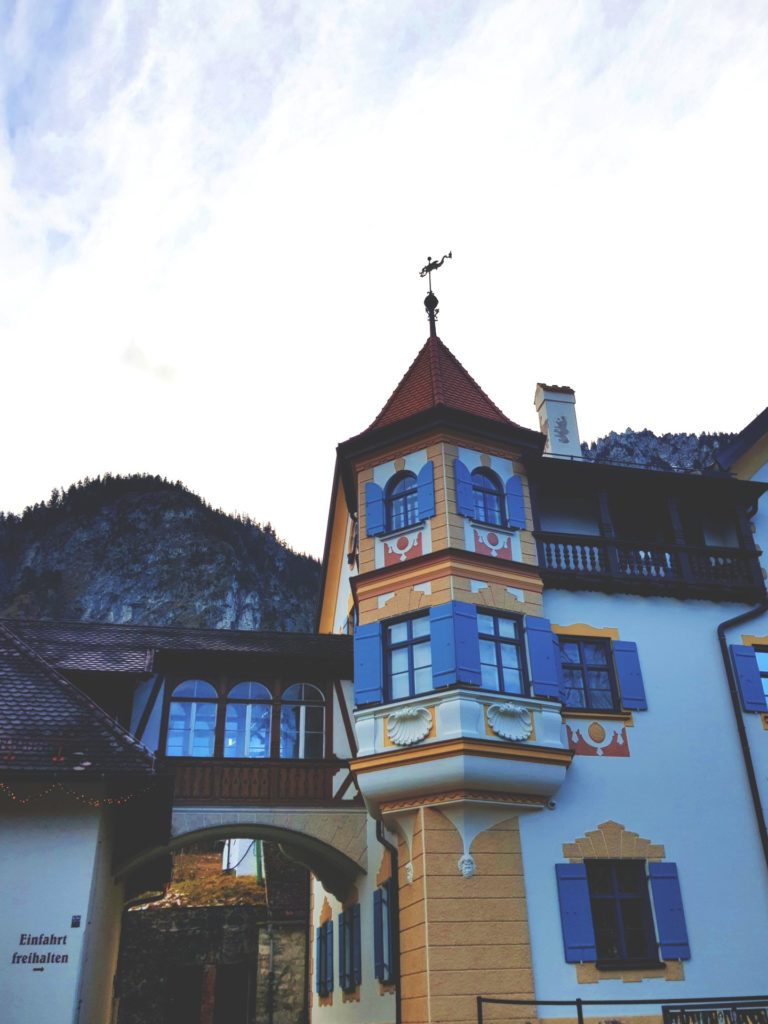
Aside from the beautiful mountain scenery, the castles are the area’s main attractions and draw in huge crowds every day. Guided tours are the only way to get inside, but be warned – they book up quickly! Make sure you’re prepared by buying your tickets online at least 2 days before the day of your visit (you can pre-book here: www.hohenschwangau.de).
If you’re short on time, there are tours available for each individual castle, but to really understand the history behind them it is recommended to visit both, so that’s the option we went for!
To get up to the castles from the village you can either take a shuttle bus, ride in a horse and carriage, or have a scenic stroll up. The walk might be uphill, but you’ll be rewarded with views like this along the way!

Just before you set off on the trail up towards Hohenschwangau Castle, make sure you stop by Lake Alpsee to soak up some Alpine peace and quiet.
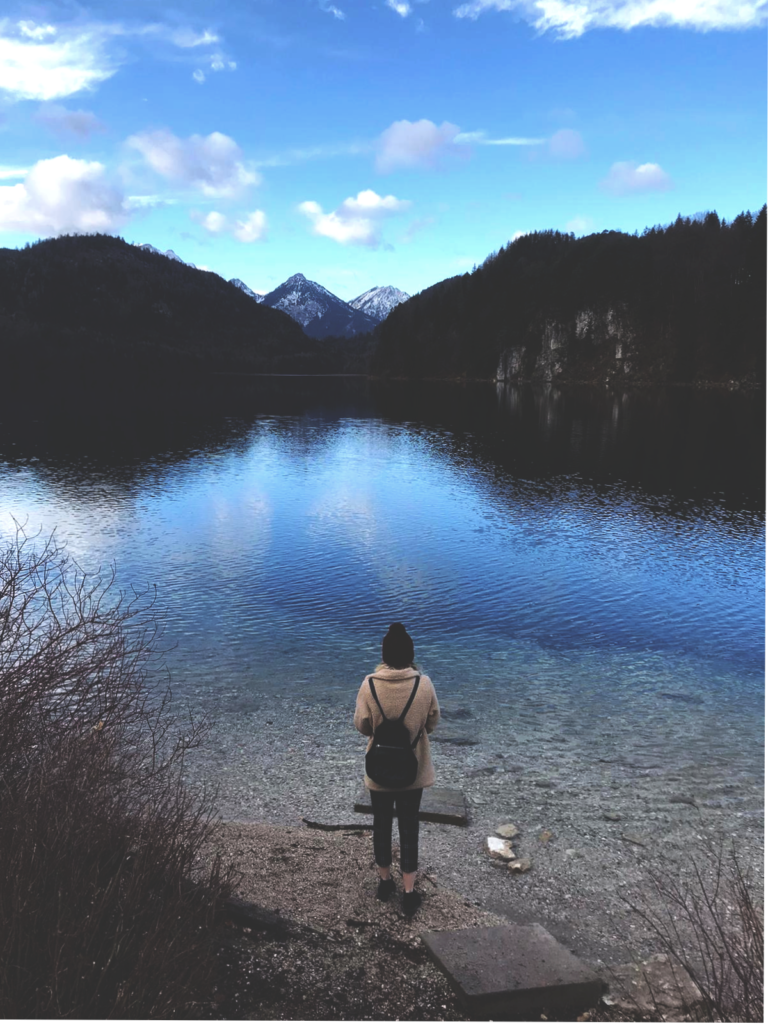
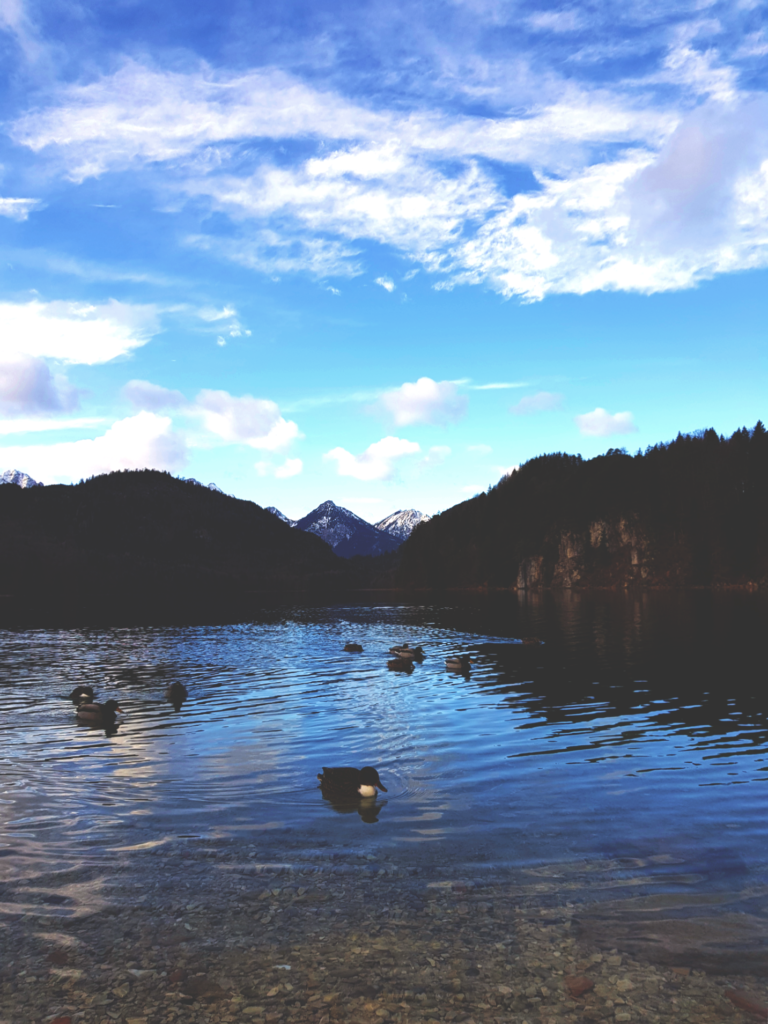
The walk from the lake takes around 20 minutes up a steadily inclining road through the forest, before you’re greeted by the yellow walls of Hohenschwangau Castle.
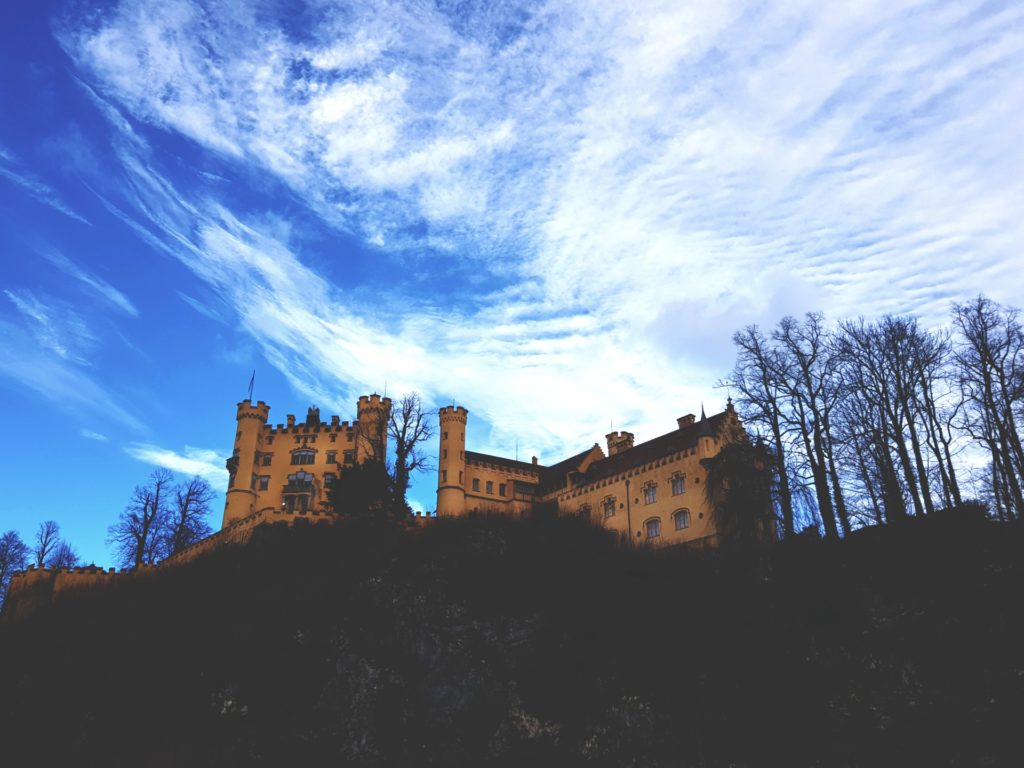
For centuries, Hohenschwangau was the residence of Schwangau knights. By the time it was passed down to King Maximilian II in 1832, the 12th-century castle was in ruins. Determined to restore the castle to its former glory, the King had it rebuilt in a neo-Gothic style so it could be used as the Summer holiday home of the Bavarian royal family.
The less well-known castle of the two, Hohenschwangau is considerably smaller than Neuschwanstein, however it is by no means less impressive. Inside, walls are intricately decorated with scenes from medieval legend and poetry, while all the original furniture is amazingly preserved, frozen in time in their same arrangement from the 19th century.
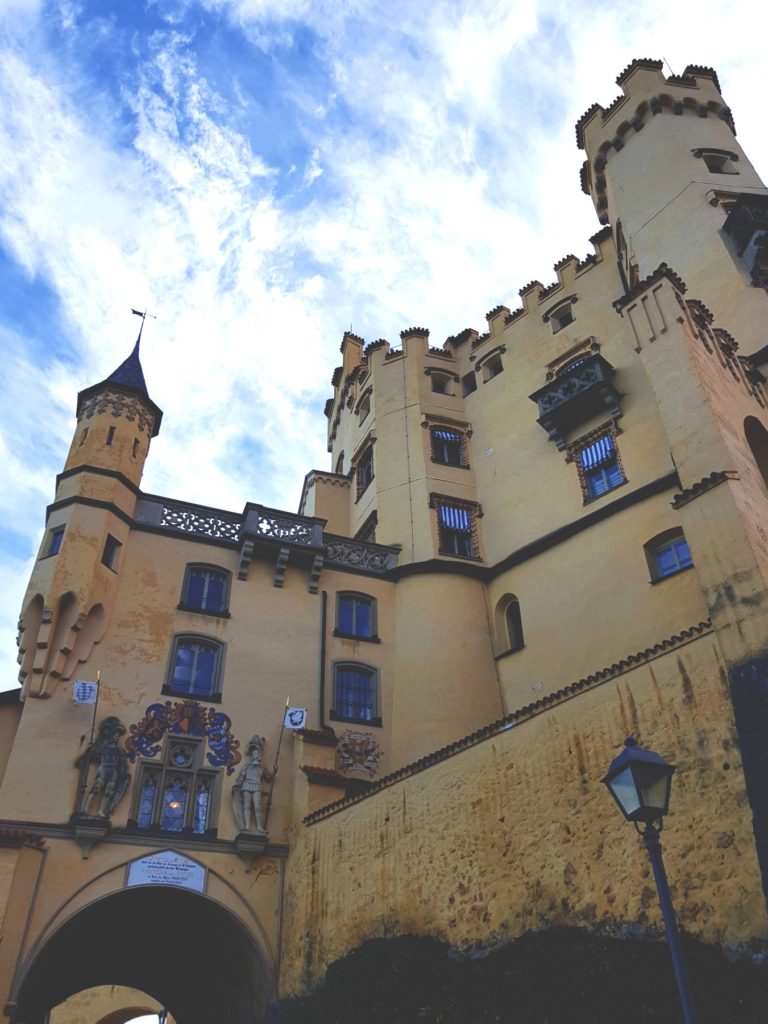
It was here that the King’s son, Ludwig II, spent much of his childhood before inheriting the castle when he came to the throne in 1864. Inspired by the Romantic scenes of the legends and poetry he had grown up with, he was determined to build his own bigger and bolder castle. One which looked like it had appeared from a Medieval fairytale. And so, the dazzling Neuschwanstein Castle was created!
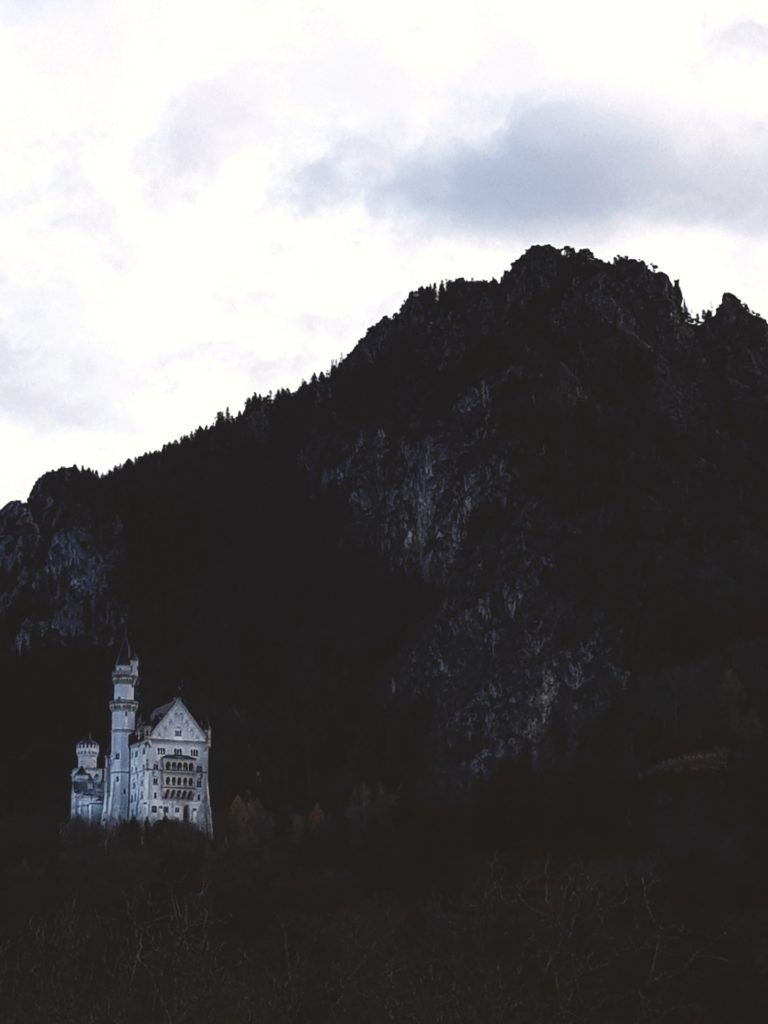
From Hohenschwangau, it is about a 40 minute walk to the neighbouring Neuschwanstein. It might be a bit more of a slog uphill, but keep going and you’ll soon catch a glimpse of some turrets peering over the trees….
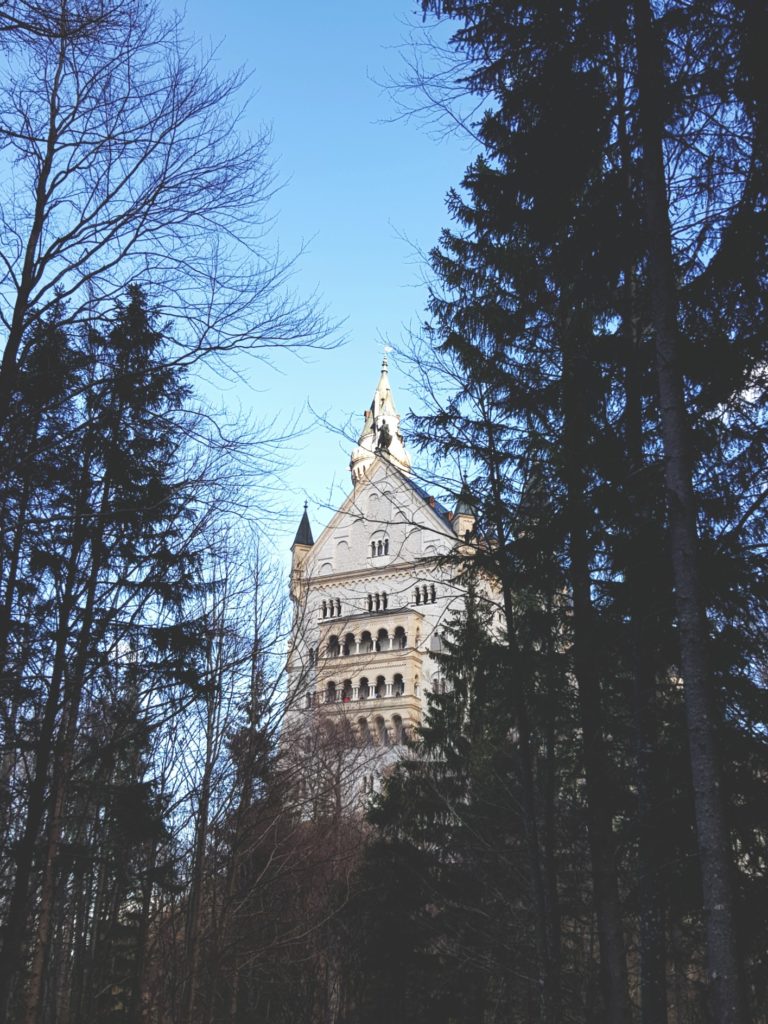
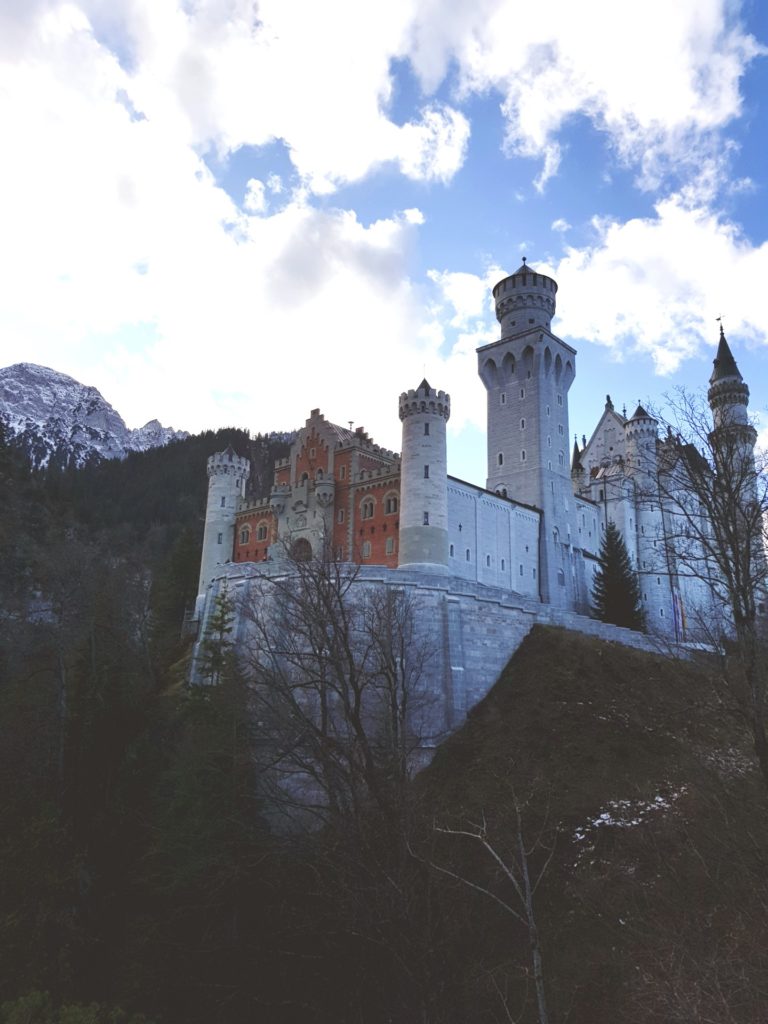
Despite its fairytale appearance, the history behind Neuschwanstein is far from it. After losing his power in the Austro-Prussian War when Bavaria was conquered by Prussia, Ludwig retreated into his own private fantasy world where he felt he could be a true King. He became obsessed with the idea of his new castle, and when construction began 2 years later in 1868, he poured more and more money into creating the extravagant home he was dreaming of.
Unfortunately his plans were just too big, and he gradually drove the Royals closer towards bankruptcy. Despite his family’s plees to stop and banks threatening to seize the property, Ludwig kept building. The government eventually declared him insane and forced his removal from the throne, after which the “Mad King” hid in his opulent castle.
Just 2 weeks later, Ludwig’s body was tragically found in nearby Lake Starnberg, and Neuschwanstein was finally opened to the public in an attempt to pay off his enormous debts. In a strange twist of irony, the secret castle that was made to escape the crowds soon became one of the most visited sites in Germany.
Sadly, Ludwig never saw his precious castle complete and to this day Neuschwanstein remains unfinished, with only 14 rooms out of a planned 200 being completed. But each room is an incredible insight into the fantastical mind of its creator, adorned with the finest materials, cutting-edge technology, and of course tributes to the Medieval stories he loved so much. Ludwig was particularly entranced by the legend of the swan knight Lohengrin, with hundreds of swan motifs appearing throughout each room – even the castle’s name itself translates to “New Swan Stone”.
But really, who could blame him for setting up home here when you have views like this?
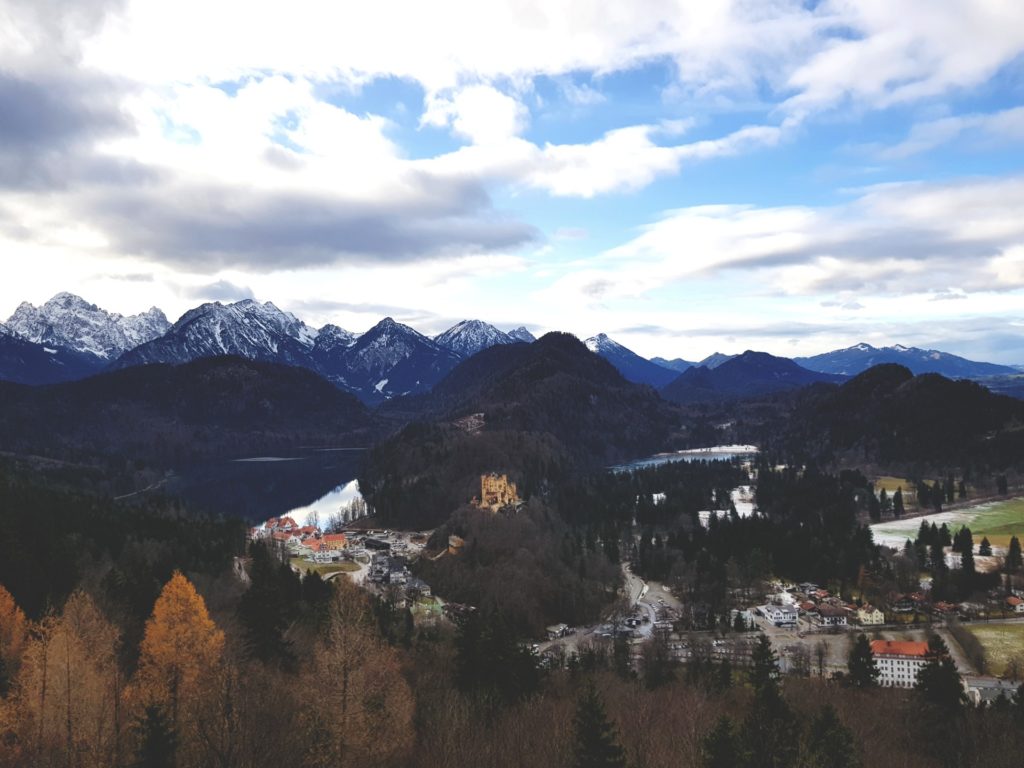
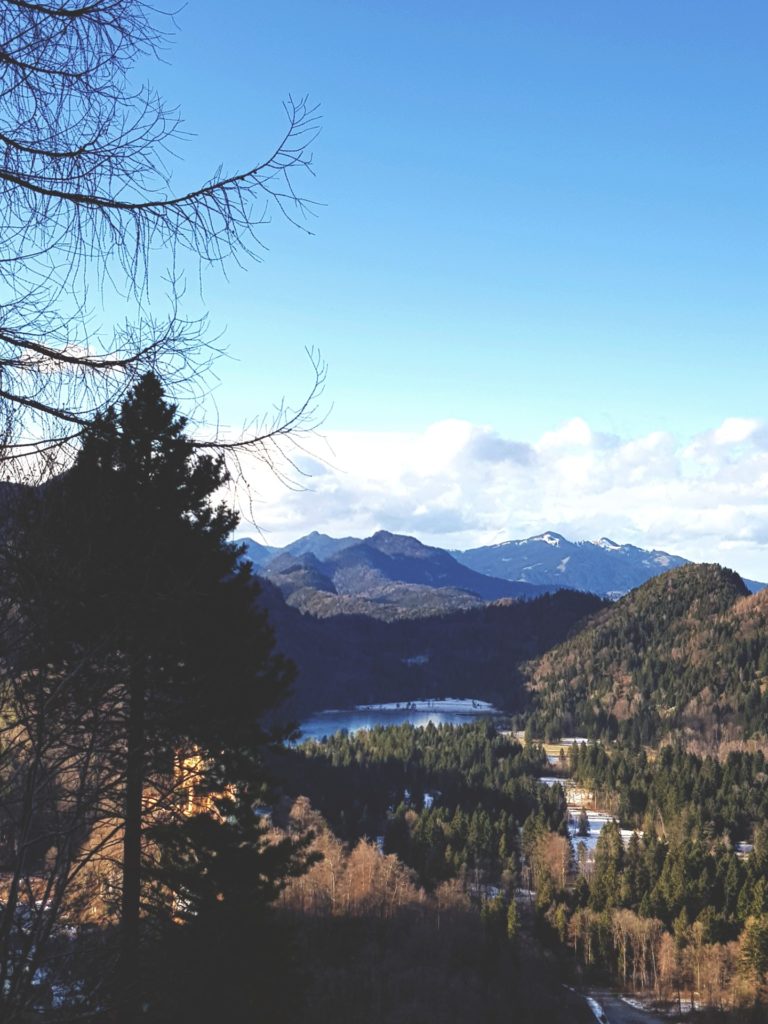
After you’ve finished your tour of the castle, walk a little further up the hill and you’ll find another surprise waiting for you…
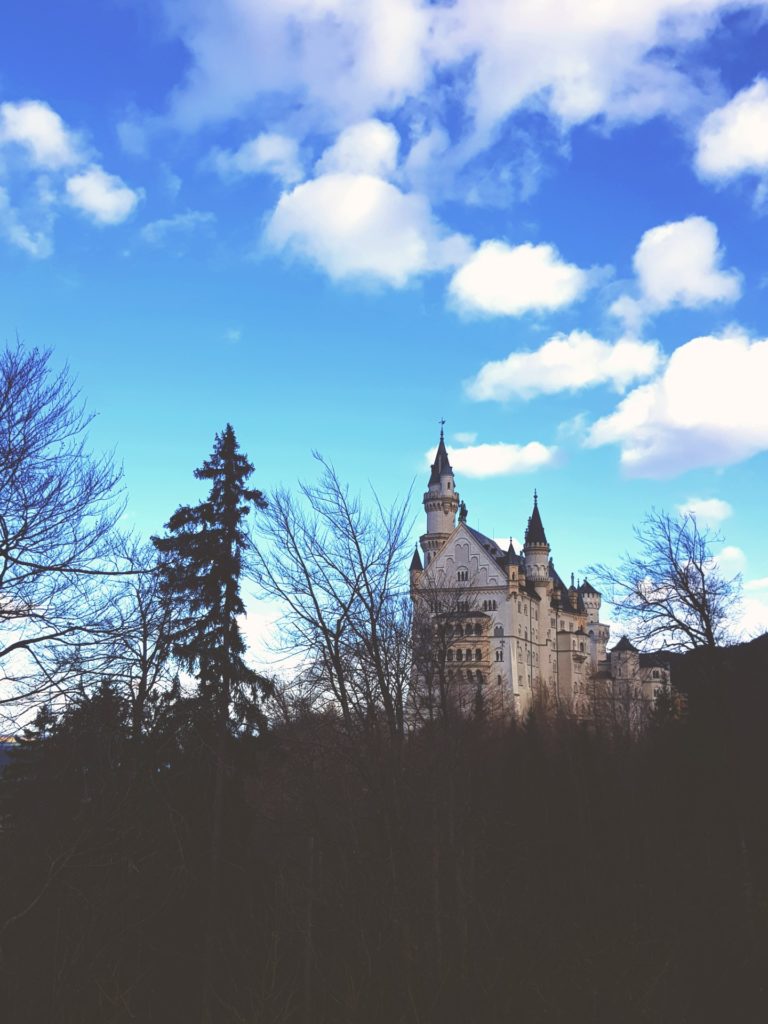
A castle this spectacular deserves to be seen from every angle, and you won’t get much better than from the Marienbrücke – a footbridge tucked away in a valley and suspended 100 metres above a waterfall. Here, you’ll be treated to views of Neuschwanstein with a backdrop of the beautiful Bavarian countryside.
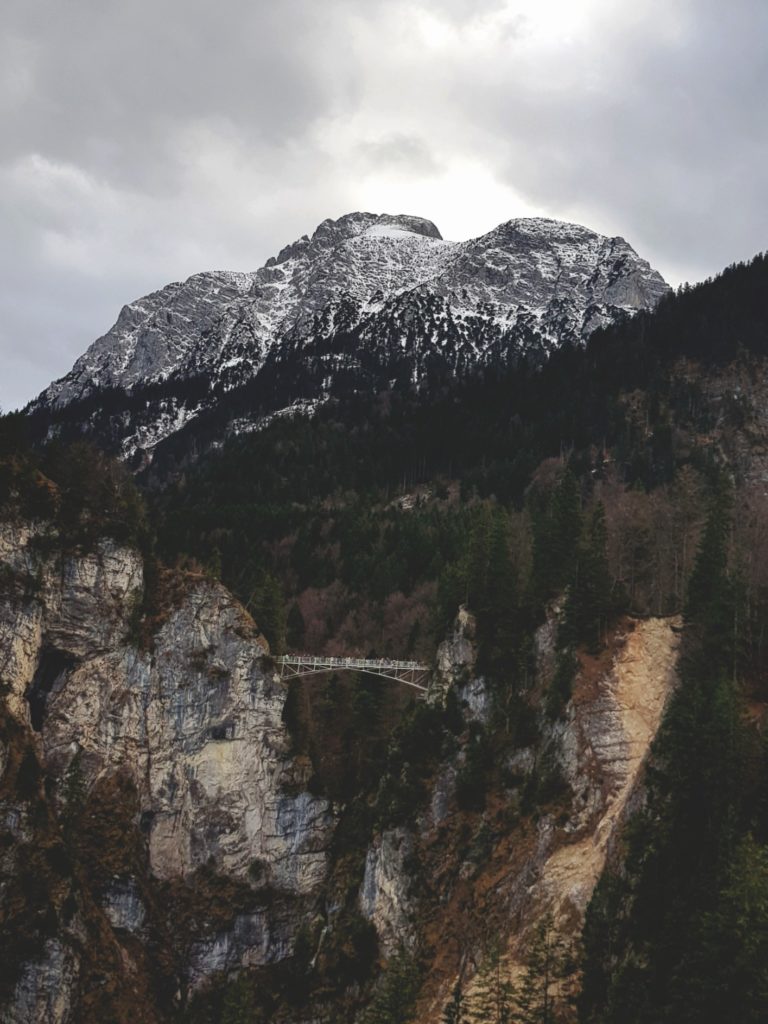


Fairytales really do exist in Bavaria!


